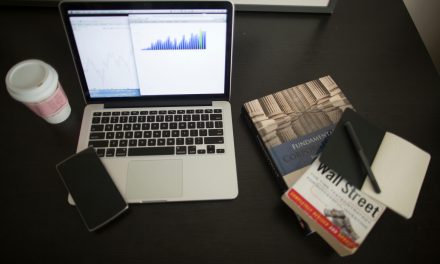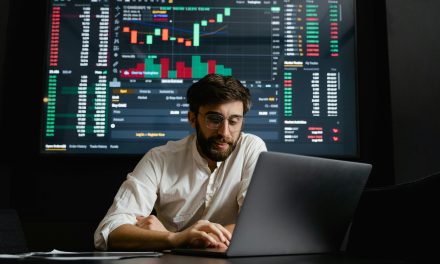Funded Trading UK
Funded trading for futures is a relatively new concept that has gained popularity among traders in recent years. It involves a trader receiving funding from a firm to trade futures contracts, with the profits split between the trader and the firm. This type of trading has many advantages, including the ability to trade with larger capital than the trader may have had access to on their own.
One of the main benefits of funded trading for futures is that it allows traders to access larger amounts of capital than they may have had access to on their own. This can be particularly useful for traders who are just starting out and do not have the necessary capital to trade at the level they would like. The funding provided by the firm can also help to reduce the risk associated with trading, as the trader is not using their own capital.
Another advantage of funded trading for futures is that it allows traders to gain experience and develop their trading skills without risking their own capital. This can be particularly useful for traders who are new to futures trading and want to gain experience in a risk-free environment. The funding provided by the firm can also help to cover any losses incurred by the trader, which can help to reduce the risk associated with trading.
Understanding Funded Trading
Definition of Funded Trading
Funded trading is a trading arrangement where a trader is provided with capital to trade with by a third party. The trader is usually required to meet certain criteria and targets to continue receiving the funding. In return, the third party takes a share of the profits earned by the trader. Funded trading is commonly used in futures trading, where it allows traders to access larger amounts of capital than they would normally be able to trade with.
Benefits of Funded Trading
One of the main benefits of funded trading is that it allows traders to access larger amounts of capital without having to put up their own money. This can be particularly useful for new traders who may not have the necessary capital to start trading. Additionally, funded trading can provide traders with a safety net, as they are not risking their own money and can therefore trade more confidently.
Another benefit of funded trading is that it can provide traders with access to a wider range of markets. This is because the third party providing the funding may have access to a wider range of markets than the trader would have access to on their own.
Risks and Considerations
While funded trading can be a useful tool for traders, there are also risks and considerations to be aware of. One of the main risks is that the trader may not be able to meet the targets set by the third party providing the funding. If this happens, the trader may lose the funding and any profits they have made.
Additionally, traders should be aware that the third party providing the funding will usually take a share of the profits earned by the trader. This means that the trader will need to earn enough profits to cover the share taken by the third party, as well as any other trading costs.
Traders should also be aware that funded trading may not be suitable for everyone. It is important to carefully consider the risks and benefits before entering into a funded trading arrangement.
Futures Markets Basics
What Are Futures?
Futures are financial contracts that obligate the buyer to purchase an underlying asset at a predetermined price and time in the future. The underlying asset can be anything from commodities, such as oil and gold, to financial instruments, such as stock indices and currencies.
Futures contracts are standardized, which means that the contract specifications, including the size, quality, and delivery date of the underlying asset, are predetermined. This standardization ensures that all parties trading the futures contract are on the same page and eliminates the need for negotiation.
How Futures Trading Works
Futures trading involves buying or selling futures contracts on a futures exchange. The exchange acts as a central marketplace, where buyers and sellers can meet and trade futures contracts.
The trading process is relatively simple. A trader can either buy or sell a futures contract, depending on their market outlook. If they believe that the price of the underlying asset will increase, they will buy a futures contract. If they think the price will decrease, they will sell a futures contract.
Futures trading is also highly leveraged, which means that traders can control a large amount of the underlying asset with a relatively small amount of capital. This leverage amplifies both profits and losses, making futures trading a high-risk, high-reward activity.
Overall, futures trading can be a useful tool for hedging against price fluctuations or speculating on market movements. However, it is important to understand the risks involved and have a solid trading plan before entering the market.
Getting Started with Funded Trading
Funded trading is a popular way for traders to gain access to capital for trading futures. It allows traders to trade with larger sums of money than they would normally be able to, and to potentially earn greater profits. However, getting started with funded trading can be a daunting task. In this section, we will discuss the key steps to take when starting out with funded trading.
Selecting a Funding Provider
The first step in getting started with funded trading is to select a funding provider. There are many funding providers to choose from, each with their own unique features and benefits. It is important to choose a provider that is reputable and has a good track record of funding successful traders. Some of the most popular funding providers include TopstepTrader, OneUp Trader, and Earn2Trade.
Qualification Criteria
Once you have selected a funding provider, the next step is to meet their qualification criteria. Most funding providers have a set of criteria that traders must meet in order to be eligible for funding. These criteria typically include a minimum account balance, a minimum trading experience, and a successful completion of a trading evaluation. It is important to carefully review the qualification criteria of each funding provider to ensure that you meet their requirements.
Account Types and Sizes
After you have met the qualification criteria, the next step is to select an account type and size. Most funding providers offer a range of account types and sizes, each with their own unique features and benefits. It is important to carefully review the account types and sizes offered by each funding provider to ensure that you select the one that best meets your trading needs and goals.
In conclusion, getting started with funded trading requires careful consideration of several key factors, including the selection of a reputable funding provider, meeting qualification criteria, and selecting an account type and size that best meets your trading needs and goals. By taking these steps, traders can gain access to the capital they need to trade futures with confidence and potentially earn greater profits.
Trading Strategies for Futures
Futures trading involves buying and selling contracts for commodities, currencies, and other assets. To be successful in this market, traders need to have a well-defined trading strategy that takes into account market conditions, risk tolerance, and trading goals. Here are some popular trading strategies for futures:
Technical Analysis
Technical analysis involves using historical price and volume data to identify trends and patterns in the market. Traders who use this approach often rely on charts and technical indicators to make trading decisions. Some popular technical indicators for futures trading include moving averages, relative strength index (RSI), and stochastic oscillators.
Traders who use technical analysis must be able to interpret charts and identify patterns that signal potential buying or selling opportunities. They must also be able to manage risk by setting stop-loss orders and other risk management techniques.
Fundamental Analysis
Fundamental analysis involves analysing the underlying factors that affect the price of a commodity or asset. Traders who use this approach often look at supply and demand data, economic reports, and other market indicators to make trading decisions.
Traders who use fundamental analysis must be able to interpret economic data and understand how it affects the market. They must also be able to manage risk by setting stop-loss orders and other risk management techniques.
Risk Management Techniques
Risk management is an essential part of any trading strategy. Traders must be able to manage risk by setting stop-loss orders, managing position sizes, and using other risk management techniques.
Traders who use risk management techniques must be able to identify potential risks and take steps to mitigate them. They must also be able to manage their emotions and avoid making impulsive trading decisions.
In conclusion, successful futures trading requires a well-defined trading strategy that takes into account market conditions, risk tolerance, and trading goals. Traders who use technical analysis, fundamental analysis, and risk management techniques can increase their chances of success in this market.
Funded Account Operations
Trading futures with a funded account is an excellent way to gain access to the market without risking your own money. Funded trading programs provide traders with a capital allocation to trade futures, and profits are shared between the trader and the funding company.
Profit Sharing Models
Funded trading programs offer different profit-sharing models, and traders need to understand the terms and conditions of each program before joining. Some programs offer a 50/50 profit split, while others offer a higher percentage for the trader. The profit split is usually based on the trader’s performance, and traders need to meet specific profit targets to receive their share of the profits.
Compliance and Rules
Funded trading programs have specific rules and regulations that traders need to follow. These rules are designed to protect both the trader and the funding company. Traders need to adhere to the risk management guidelines and avoid violating any trading rules. Failure to comply with the rules may result in the trader’s account being suspended or terminated.
Software and Tools
Funded trading programs offer traders access to advanced trading software and tools. These tools help traders to analyze the market and make informed trading decisions. The software may include charting tools, order entry tools, and risk management tools. Traders need to familiarize themselves with the software and use it to their advantage.
In conclusion, funded trading for futures is an excellent way for traders to gain access to the market without risking their own money. Traders need to understand the profit-sharing models, comply with the rules, and use the software and tools to their advantage.
Advancing in Funded Trading
Scaling Up
Once a trader has successfully passed the evaluation phase and has secured a funded trading account, the next step is to scale up their trading. This means increasing the size of their trades and taking on more risk in order to maximise profits.
However, it is important for traders to approach scaling up with caution. It is recommended that traders gradually increase their trade size over time, rather than jumping in with both feet. This allows them to adjust to the increased risk and ensure that their trading strategy is still effective.
Traders should also be sure to keep a close eye on their risk management strategies when scaling up. This includes setting stop-losses and taking profits at appropriate levels, as well as monitoring overall portfolio risk.
Performance Evaluation
As traders scale up their trading, it becomes increasingly important to evaluate their performance. This allows them to identify areas for improvement and make necessary adjustments to their trading strategy.
Traders should keep track of key performance metrics, such as profit and loss, win rate, and average trade duration. They can use this information to identify patterns in their trading and make changes accordingly.
It is also recommended that traders seek feedback from others, such as trading coaches or mentors. This can provide valuable insights and help traders identify blind spots in their trading.
Overall, advancing in funded trading requires careful planning and execution. By scaling up gradually and evaluating their performance regularly, traders can continue to grow their accounts and achieve long-term success.
Challenges and Solutions
Common Pitfalls
Funded trading for futures can be a challenging endeavour, even for experienced traders. One common pitfall is underestimating the importance of risk management. It is crucial to have a solid risk management plan in place to avoid significant losses. Additionally, traders may fall into the trap of over-trading, which can lead to burnout and poor decision-making.
Another common pitfall is relying too heavily on technical analysis without considering fundamental factors. It is important to take into account both technical and fundamental analysis when making trading decisions. Failure to do so can lead to missed opportunities or losses.
Troubleshooting Issues
Traders may encounter various issues when participating in funded trading for futures. One common issue is slippage, which occurs when the market moves against a trader’s position before their order is executed. This can result in a larger than expected loss. To avoid slippage, traders can use limit orders, which allow them to specify the maximum price they are willing to pay or the minimum price they are willing to sell for.
Another issue that traders may face is a lack of liquidity in the market. This can make it difficult to enter or exit trades at desired prices. To mitigate this issue, traders can use a variety of trading instruments and strategies, such as spread trading or options, to increase their flexibility and reduce their reliance on a single market.
In summary, while funded trading for futures can present challenges, traders can overcome these obstacles by implementing a solid risk management plan, balancing technical and fundamental analysis, and using various trading instruments and strategies to increase their flexibility and reduce their reliance on a single market.
Future of Funded Trading
Industry Trends
The funded trading industry for futures is constantly evolving, with new trends emerging every year. One of the most notable trends is the increasing popularity of remote trading. This trend has been driven by advances in technology, which have made it possible for traders to execute trades from anywhere in the world.
Another trend in the industry is the growth of prop trading firms. These firms provide traders with the capital they need to trade, in exchange for a share of the profits. This model has become increasingly popular in recent years, as it allows traders to access larger amounts of capital than they would be able to on their own.
Technological Advancements
Advances in technology have had a significant impact on the funded trading industry for futures. One of the most significant technological advancements has been the development of algorithmic trading. This technology allows traders to automate their trading strategies, which can help to improve efficiency and reduce the risk of human error.
Another technological advancement that has had an impact on the industry is the rise of mobile trading apps. These apps allow traders to monitor their positions and execute trades from their mobile devices, which can be particularly useful for traders who are on the go.
Overall, the future of funded trading for futures looks bright, with new trends and technological advancements driving growth in the industry. As technology continues to evolve, it is likely that we will see new innovations emerge that will further enhance the trading experience for traders.





